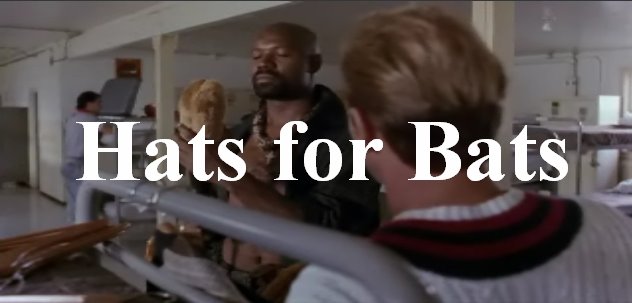After compiling a bunch of
xERA numbers, I decided to take a look at the top pitchers in baseball right now. I ranked starters by Peripheral Wins Above Replacement (
PWAR), which came from
xRA and
xIP numbers. I took each players numbers over the last 3
calendar years (thanks
fangraphs), and simply found wins above replacement per year over that three year span. This isn't a list of who has the most value over any amount of time or who has the most trade value, it's just who have been the best pitchers over the last 1095 days.
1. Johan Santana, 4.14
PWAR8.96 K/9, 2.04 BB/9, 39.7 GB%
661
xIP, 3.39
xERAThere's a reason that this guy caused so much attention when he was on the trade market last winter. The GB% is below average, but those walks and strikeouts are fantastic. Santana is 29 and while he probably won't be posting
ERA's below 3 anymore, he has a few more years to be included in the conversation on who the best pitcher in the majors is. While his K and BB numbers this year aren't quite what they used to be, his GB% is at a career high 42.7%.
2. Brandon Webb, 4.06
PWAR7.26 K/9, 2.26 BB/9, 64.3 GB%
677
xIP, 3.46
xERAWhen you're the best
groundball pitcher in the majors and have 3.21 K/BB, you deserve to be mentioned among the elite. Webb will earn $5.5M this year, $6.5M next year, and has a club option for $8.5M in '10, making him on of the best values for a pitcher in his prime. Webb's
PWAR suggests value of over $16M, and if he continues to induce those kind of
GB's with those K and BB, he may see that kind of money if he hits the market in '11 at the age of 32.
3. CC
Sabathia, 3.91
PWAR8.22 K/9, 1.96 BB/9, 46.1 GB%
665
xIP, 3.49
xERALast year's Cy Young winner will make quite a lot of money this winter, and whatever team is able to sign him will certainly get some value out of that contract. As great as CC was last year, he's been just as good this year, with the highest K/9 of his career and the second best GB%.
Sabathia has been fantastic since '06, with both an ERA and
FIP under 3.30 in each of those years. Analysts often mention how
Sabathia has "learned to pitch" in the past few years, a thought which is backed up by the numbers.
Sabathia lowered his BB/9 each year from '01-'07, from a replacement-level 4.74 in his rookie year to an elite 1.38.
Sabathia has also gone from throwing 66.3% fastballs in '05 to 55.2% fastballs this year, while raising his slider % from 15.3 to 25.2% in that time. This
newfound ability to mix things up is the root of
Sabathia's improved K and GB rates.
4. Felix Hernandez, 3.66
PWAR8.15 K/9, 2.81 BB/9, 58.5 GB%
600.5
xIP, 3.44
xERAThe fact that a 22-year-old has posted these numbers over the last 3 years is pretty nuts. I'd like to do a complete profile of this pitcher who posted a 2.85
FIP over 85.1
IP at the age of 19, but for now I'll stick to the basics. Hernandez could be the best pitcher in the majors very soon, and he's still a few years away from his prime. Felix has been homer-lucky this year (7.8 HR/
FB), and the grounders aren't quite what they used to be (51.1% in '08), but the strikeouts are encouraging (8.40 K/9). Hernandez is the probably the hardest throwing starter in the majors, as his 95.3 mph average fastball over the last three years has been the best among
MLB starters. Felix's career is just beginning, and it should be an entertaining one to watch.
5. Jake
Peavy, 3.58
PWAR9.39 K/9, 2.71 BB/9, 41.4 GB%
595
xIP, 3.45
xERALast year
Peavy rode a 2.54 ERA to a 19-6 record and the
NL Cy Young title. His
FIP wasn't quite as low, although it did as well lead the majors at an impressive 2.84. However,
FIP is not immune to ballpark issues, which were
definitely prevalent in
Peavy's 5.8% HR/
FB rate. This year,
Peavy has kept his ERA below his peripherals in a different way, by stranding 84.5% of runners. While his BB/9 has improved, he isn't striking out quite as many batters as in the past couple years and his GB%, which was a career high 44.0% last year, is back down to 41.0%. Looking at his pitch selection from the past three years, the difference that stands out most is his use his
offspeed pitches, throwing 27.6%
offspeed compared to 33.1
offspeed in '07. In '06, when he had a 38 GB% and a 3.51
FIP, he threw just 25.5%
offspeed.
Peavy could get that GB% back to his '07 level if he started to throw more
offspeed pitches. It may cost him a few walks, but those GB are the difference between the 3.16
xERA he sported in '07 and the 3.85
xERA he has this year.
Here's the rest of the top 10.
6. Dan
Haren, 3.54
PWAR7. Derek Lowe, 3.24
PWAR8. Javier Vazquez, 3.14
PWAR9. Josh Beckett, 2.97
PWAR10. Scott
Kazmir, 2.81
PWARJust for fun, I'll list my opinion on the top five for a few periods of time.
Best Pitcher for 2009
1. Brandon Webb
2. CC
Sabathia3. Johan Santana
4. Jake
Peavy5. Felix Hernandez
Best Pitcher for 2009-2011
1. CC
Sabathia2. Brandon Webb
3. Jake
Peavy4. Felix Hernandez
5. Johan Santana
Best Pitcher for 2009-2014
1. CC
Sabathia2. Felix Hernandez
3. Brandon Webb
4. Jake
Peavy5. Scott
KazmirStats came from the irreplaceable
fangraphs.com

